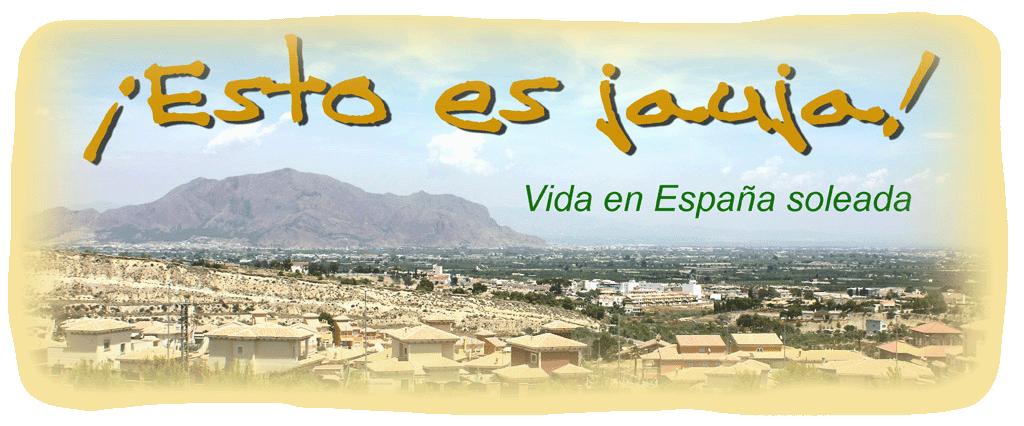Pascual Segura gives us another fascinating glimpse into the history of our town
It was in the year 1936 when the military uprising took place that unleashed one of the greatest misfortunes in the recent history of our country: the Spanish Civil War.
Battle after battle, the nationalist rebellion was taking territories resulting in a Spain divided into two camps: the national and the republican. Our region was surrounded inside the republican side, so in our province, and therefore in Bigastro, the events that took place between 1936 and 1939 were subject to the Republican regime.
Although Bigastro was not directly involved in the conflict, it did effect the town and made for some dramatic changes.
One of the most striking changes was the mayor's decision to convert the parish church of Our Lady of Bethlehem into a supply warehouse, the parish house into a hospital and refugee house, and the old asylum became a house-barracks for the security and assault guards.
One of the most notable events took place in April 1938, when the town of Bigastro was bombed by the national side. On May 25 of the same year, Alicante was bombed by an Italian squadron based in Mallorca, causing 300 deaths. Three months later, 19 people died when Torrevieja was also bombed by an Italian squadron. 1938 became a year of war, tragedy and bombing in our province, but what about Bigastro? Alicante was a primordial city for the republican resistance, and Torrevieja could be considered an enemy port, but why bomb Bigastro? What was special about Bigastro that drew the attention of the national side?
It happened in April 1938, between two and three in the morning, when a squadron of the aviation of the national side dropped one of its bombs on the old yesera located in Bigastro on the right side of the entrance to the municipality from Orihuela . The yesera was a factory in which gypsum was produced in a kiln of gigantic dimensions. The kiln was partially buried to take advantage of the unevenness of the terrain. It was built with walls more than half a metre thick and around 3 metres high. The furnace was loaded with aljez which was cooked for periods of 24 hours. The kiln therefore had to be constantly supplied with fuel.
During the early morning, the national squadron flew over our region when one of the pilots observed the whitish cloud that rose from the yesera. Confusing this one with a great factory of arms or supplies of the republican side, he dropped a bomb with the purpose of destroying it and disabling the enemy forces. The bomb descended in the direction of the yesera and landed in a well belonging to a bigastrense family known locally as "the sardines". The explosion was of such magnitude that it woke up the neighbours of the town, spreading panic amongst them.
Mariano López, a nonagenarian bigastrense who still lives a few metres from the old yesera, remembers it well. Hearing the explosion, he jumped out of bed and ran towards the place where the disaster had occurred.
When he arrived, Mariano saw a considerable crater in the place that the well occupied, which was totally destroyed. Rocks and debris were scattered several metres from the site.
.
The reaction from the City Council was rapid. The secretary, Juan Galvez, wrote in the municipal records that the mayor, Mr. José Aureliano Díaz, ordered that "not a single electric lamp should be lit in the town, to avoid serving as a guide to factional aviation. "
.
On Sunday, April 4, 1937, the Bigastrense mayor ordered the painting of the glass in the street lighting, so that the lights were dimmer and thus prevent the lamps from guiding the airplanes of the national side and that bombed Bigastro. First the lamps were painted, then they were turned off.
These were not the only decisions taken in favour of the dominant side in our region. D. José Aureliano Díaz also allocated a percentage of the municipal budget to help the Republican army, in addition to printing brochures in support of the republican aviation battalions. These were later distributed by the people to encourage young bigastrenses to enlist in these companies.
On Sunday May 22, 1938 he made a speech to the neighbors, gathered in the then-named Plaza de la República -current plaza of the Constitution- saying: "All united with our faith, enthusiasm and antifascist spirit fight for Spain to crush national and foreign fascism with the triumph of our glorious weapons, which are supported by an insurmountable wall of anti-fascist breasts. "
Thursday, November 01, 2018
Subscribe to:
Post Comments (Atom)

No comments:
Post a Comment